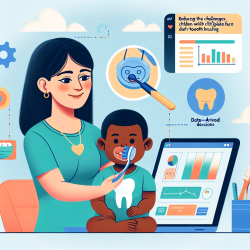Introduction
Imagine a world where a child who has never spoken a word begins to express themselves through speech. This is not just a dream but a reality made possible through innovative interventions like Auditory-Motor Mapping Training (AMMT). This novel approach, detailed in the research article "Auditory-Motor Mapping Training as an Intervention to Facilitate Speech Output in Non-Verbal Children with Autism: A Proof of Concept Study," offers hope and practical strategies for practitioners working with non-verbal children with autism.
The Power of AMMT
AMMT is a groundbreaking intervention that leverages the inherent musical strengths of children with autism to facilitate speech production. It combines intonation (singing) and bimanual motor activities (tapping on tuned drums) to train the association between sounds and articulatory actions. This method engages a network of brain regions that are often dysfunctional in autism, providing a unique pathway to speech development.
Study Insights
The study involved six non-verbal children with autism, each undergoing 40 individual AMMT sessions over eight weeks. The results were remarkable: all children showed significant improvements in their ability to articulate words and phrases. This progress extended to items not practiced during therapy sessions, indicating a generalization of skills.
- Participants: Six non-verbal children aged 5-9 years.
- Duration: 40 sessions over eight weeks.
- Outcome: Significant improvement in speech articulation and generalization to untrained items.
Implications for Practitioners
For practitioners, AMMT represents a promising tool in the arsenal of interventions for non-verbal children with autism. The study's findings suggest that incorporating musical elements into therapy can engage and potentially strengthen language-related anatomical pathways. This approach not only aids in speech development but also enhances the overall quality of life for these children.
Encouraging Further Research
While this study provides a strong proof of concept, further research is needed to explore the full potential of AMMT. Practitioners are encouraged to consider how they might integrate this approach into their practice and to participate in ongoing research efforts to refine and expand its application.
Conclusion
AMMT offers a beacon of hope for non-verbal children with autism and their families. By harnessing the power of music and movement, we can unlock the voices of children who have long been silent. As we continue to explore and expand upon these findings, the future looks bright for those who have yet to find their voice.
To read the original research paper, please follow this link: Auditory-Motor Mapping Training as an Intervention to Facilitate Speech Output in Non-Verbal Children with Autism: A Proof of Concept Study.










